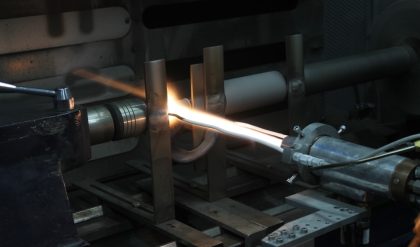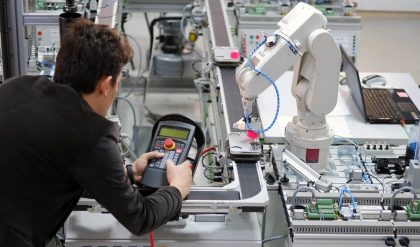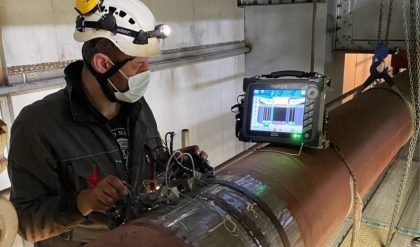The battery stores electricity in the form of chemical energy. Through a chemical reaction process the battery creates and releases electricity as needed by the electrical system or devices. Since the battery loses its chemical energy in this process, the battery must be recharged by the alternator. By reversing electrical current flow through the battery the chemical process is reversed, thus charging the battery. The cycle of discharging and charging is repeated continuously and is called “battery cycling”.
The purpose of the battery
The battery supplies electricity when the:
Engine is off:
electricity from the battery is used to operate lighting, accessories, or other electrical systems when the engine is not running.
Engine is starting:
electricity from the battery is used to operate the starter motor and to provide current for the ignition system during engine cranking. Starting the car is the battery’s most important function.
Engine is running:
electricity from the battery may be needed to supplement the charging system when the vehicle’s electrical load requirements exceed the charging system’s ability to produce electricity. Both the battery and the alternator supply electricity when demand is high.
Batteries – primary or secondary
Batteries can either be a primary cell, such as a flashlight battery once used, throw it away, or a secondary cell, such as a car battery (when the charge is gone, it can be recharged).
Primary cell:
because the chemical reaction totally destroys one of the metals after a period of time, primary cells cannot be recharged. Small batteries such as flashlight and radio batteries are primary cells.
Secondary cell:
the metal plates and acid mixture change as the battery supplies voltage. As the battery drains the metal plates become similar and the acid strength weakens. This process is called discharging. By applying current to the battery in the reverse direction, the battery materials can be restored, thus recharging the battery. This process is called charging. Automotive lead-acid batteries are secondary cells and can be recharged.
Batteries – wet or dry charged
Batteries can be produced as wet-charged, such as current automotive batteries are today, or they can be dry-charged, such as a motorcycle battery where an electrolyte solution is added when put into service.
Wet-charged:
the lead-acid battery is filled with electrolyte and charged when it is built. During storage, a slow chemical reaction will cause self-discharge. Periodic charging is required. Most batteries sold today are wet charged.
Dry-charged:
the battery is built, charged, washed and dried, sealed, and shipped without electrolyte. It can be stored for up to 18 months. When put into use, electrolyte and charging are required. Batteries of this type have a long shelf life. Motorcycle batteries are typically dry charged batteries.
Battery construction
An automobile battery contains a diluted sulfuric acid electrolyte, positive and negative electrodes, in the form of several plates. Since the plates are made of lead or lead-derived materials, this type of battery is often called a lead acid battery. A battery is separated into several cells (usually six in the case of automobile batteries), and in each cell there are several battery elements, all bathed in the electrolyte solution.
Cell voltage
Each cell element of the battery produces approximately 2.1 volts, regardless of the quantity or size of the plates. Automobile batteries have six cells that are connected in series, which produces a total voltage of 12.6 volts.
Specific gravity of electrolyte
Specific gravity means exact weight. A “hydrometer” or a “refractometer” compares the exact weight of electrolyte with that of water. Electrolyte in a charged battery is stronger and heavier than electrolyte in a discharged battery. By weight, the electrolyte in a fully charged battery is about 36% acid and 64% water. The specific gravity of water is 1.000, and the specific gravity of sulfuric acid is 1.835, which means the acid is 1.835 times heavier than the water. The battery electrolyte mixture of water and acid has a specific gravity of 1.270 and is usually stated as “twelve and seventy.”
Battery terminal identification
Battery terminals are identified as either “positive” or “negative”. Battery cases are marked with a “+” for the positive terminal, and a “-” on the negative terminal. The words “pos” or “neg” are often used instead of the + or -. On top post terminal batteries, the positive post is slightly wider than the negative terminal post. This allow for easy identification.
Battery capacity
Batteries are generally rated using two parameters. The first, and most obvious, is voltage. The second, and less intuitive, is amp-hours. Amp-hours indicate the maximum current that a battery can continuously deliver for a period of 1 hour.When a battery is discharged at this rate, usually its full charge will be expended. A battery that has a 250 amp-hour rating is capable of delivering 250 amps at the batteries full voltage for 1 hour. A battery that has a 500 ma-hour rating is capable of delivering 1/2 amp for 1 hour. It should also be noted that the amp-hour rating is an indication of the capacity of battery. If our 250 amp-hour battery is discharged at a rate of 2 amps, its charge life will be 125 hours. Similarly, if we discharge the battery at 375 amps, the charge life will be 0.66 hours or 39.6 minutes.
Amp-hours/discharge rate= charge life
Another figure we see on automotive batteries is “cold cranking amps.” This figure is generally higher than the amp- hour rating. This rating refers to the maximum current that the battery can deliver at full charge for a short period of time. This is a loose standard and shouldn’t be relied on when selecting a battery for peak demand applications. It should also be noted that when a battery is pressed into this type of service, it can get fairly hot and a long cool down period is required.
Battery service
Battery services are routinely performed. These services include:
1) Testing
2) Charging
3) Cleaning
4) Jumping a dead battery.
5) Adding water
Battery testing
Battery testing has changed in recent years; although the three areas are basically the same, the equipment has improved
· Visual inspection
· State of charge
a. Specific gravity
b. Open circuit voltage
· Capacity or heavy load test
Visual inspection
Battery service should begin with a thorough visual inspection. This inspection may reveal simple, easily corrected problems.
1. Check for cracks in the battery case and broken terminals. Either may allow electrolyte leakage, which requires battery replacement.
2. Check for cracked or broken cables or connections. Replace, as needed.
3. Check for corrosion on terminals and dirt or acid on the case top. Clean the terminals and case top with a mixture of water and baking soda. A battery wire brush tool is needed for heavy corrosion on the terminals.
4. Check for a loose battery hold-down or loose cable connections. Clean and tighten, as needed.
5. Check the electrolyte fluid level. The level can be viewed through the translucent plastic case or by removing the vent caps and looking directly into each cell. The proper level is 1/2″ above the separators (about 1/8″ below the fill ring shown below). Add distilled water if necessary. Do not overfill.
6. Check for cloudy or discolored electrolyte caused by overcharging or vibration. This could cause high self discharge. Correct the cause and replace the battery.
State of charge
The state of charge of a battery can be easily check in one of two ways:
· Specific gravity test
·Open circuit voltage test
Specific gravity readings
By measuring the specific gravity of the electrolyte, you can tell if the battery is fully charged, requires charging, or must be replaced. It can tell you if the battery is sufficiently charged for a capacity (heavy-load) test. The battery must be at least 75% charged to perform a heavy load test. In other words, each cell must have a specific gravity of 1.230 or higher to proceed.
Cell readings percent charged
1.270 = 100 %
1.230 = 75%
1.190 = 50%
1.145 = 25%
1.100 = 0%
Open circuit voltage
A digital voltmeter must be used to check the battery’s open-circuit voltage. Analog meters are not accurate and cannot be used.
1. Turn on the headlamps’ high beam for several minutes to remove any surface charge.
2. Turn headlamps off, and connect the digital voltmeter across the battery terminals.
3. Read the voltmeter. A fully charged battery will have an open-circuit voltage of 12.6 volts.
On the other hand, a totally dead battery will have an open-circuit voltage of less than 12.0 volts.
Battery terminal cleaning
Over a period of time, sulfuric acid will corrode battery terminals, clamps, and hold-down. This corrosion adds resistance and lowers current flow to and from the battery. Corrosion can be easily cleaned with a mild solution of baking soda and water. Battery terminals and cables are routinely removed, cleaned, and reinstalled.
Battery jumping with booster cables
Jump starting a dead battery with a booster battery or battery in a car can be dangerous, so the proper sequence of connections will prevent sparks. First, connect the two positive terminals, one from the good battery and the other to the dead battery. Next connect one end of the jumper cable to the negative terminal of the booster (good) battery. Finally connect the other end to a good ground on the engine away from the dead battery. If a spark occurs, it won’t be near the battery, thus reducing the chance for explosion. If the jump starting from another vehicle, start the vehicle, running the engine at 1500 rpm for a few minutes. While the engine is running, start the dead vehicle. Never jump start a frozen battery.
Adding water
Under the rare occurrence of adding water to a battery, use only distilled water. Minerals and chemicals that are commonly found in regular drinking water will react with the plate material and shorten battery life. Under normal conditions the addition of water should not be required. However, the addition of water may be necessary when the battery has been overcharged, for overcharging results in excessive evaporation of water from the electrolyte. The water level should be no higher than 1/8 inch below the bottom of the vent well. To avoid permanent damage, make sure the electrolyte level never drops below the top of the plates. Also, avoid over filling, this may result in electrolyte overflow from the battery.






Comments are closed.